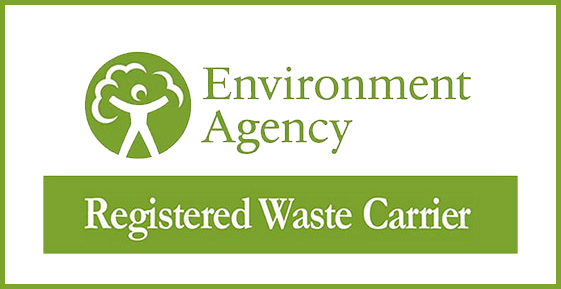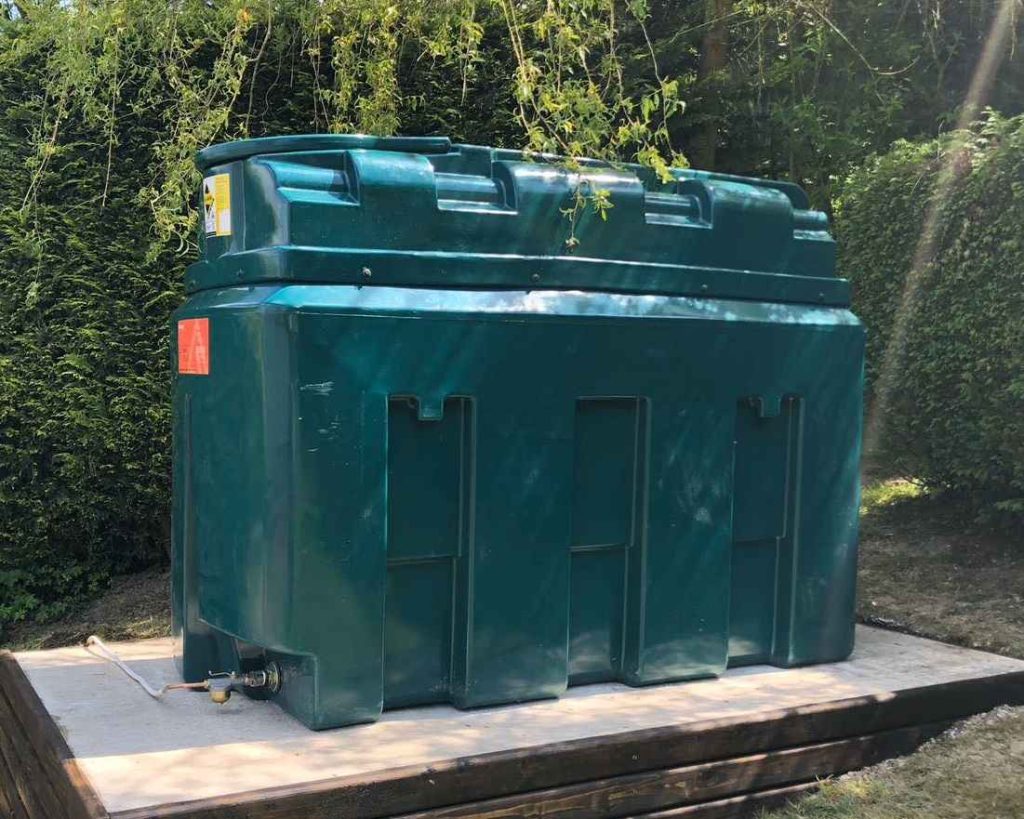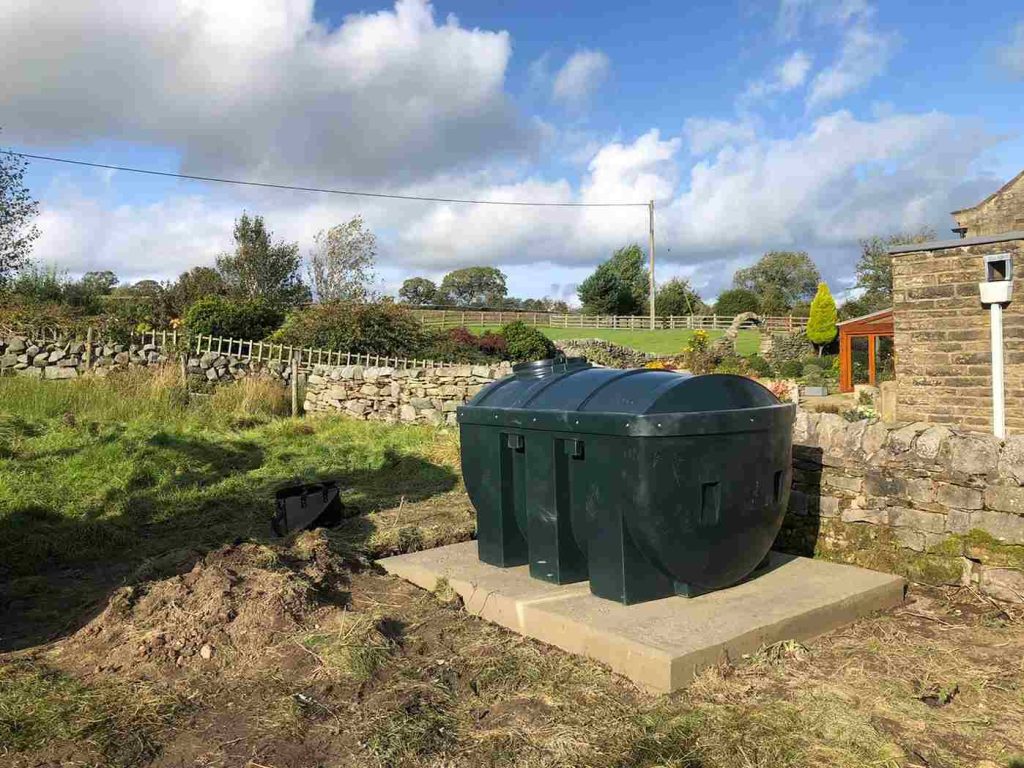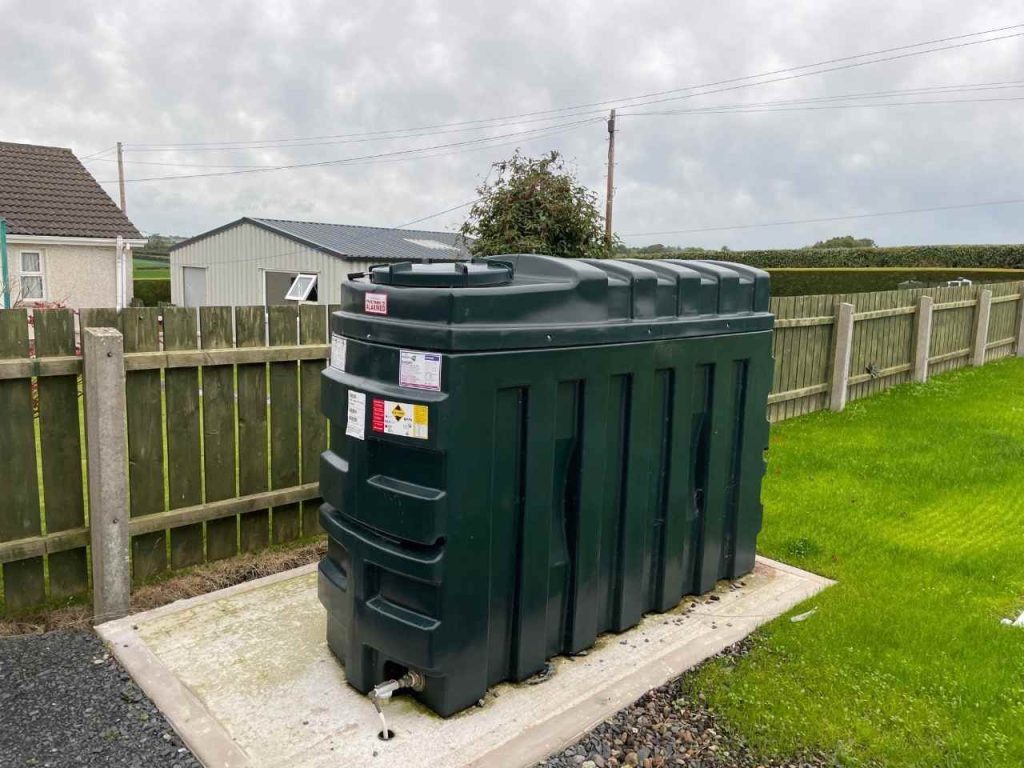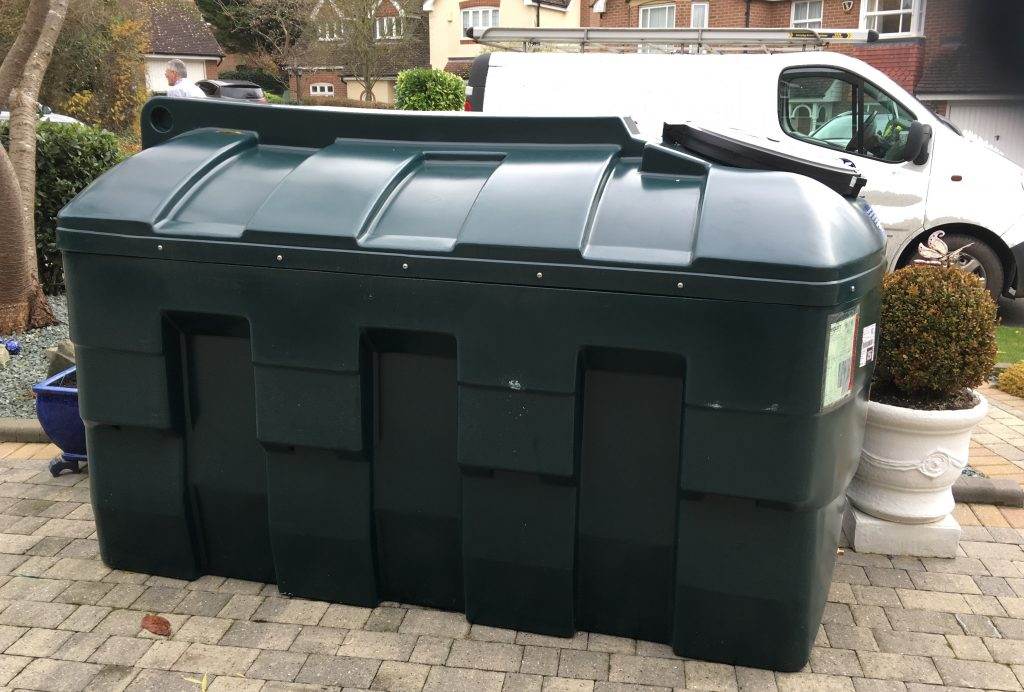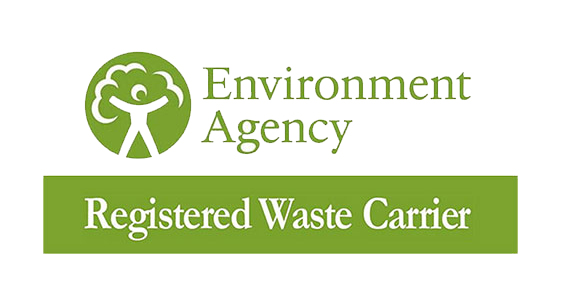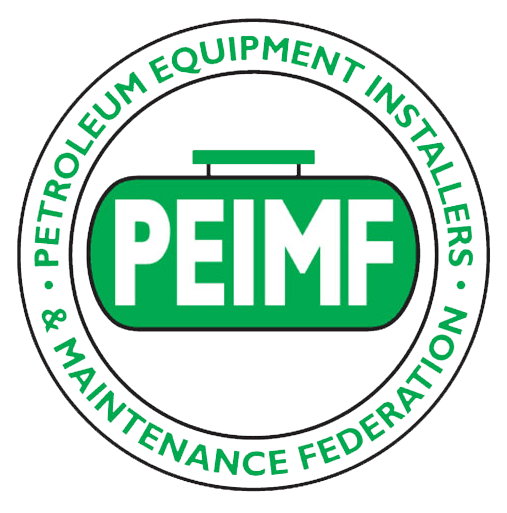Considerations before installing a Storage Tank?
There are a few Domestic oil tank installation regulations that must be followed while installing a storage tank:
- The tank should be installed in a location where it is easy to refill and maintain.
- It must have sufficient strength to fulfil its intended purpose.
- A secondary containment system should be in place to prevent leakage in the event of tank failure.
- A distance of 10 meters must be maintained from coastal and freshwater sources.
- Keep a minimum distance of 50 meters from any drinking water source.
- Polyethene tanks should meet the OFS T100 Firing Equipment Standard.
- Steel tanks should meet the OFS T200 Firing Equipment Standard.
How to Choose the Location of an Oil Storage Tank?
Commercial and domestic fuel tank regulations suggest the following considerations:
- Store the fuel tank on floor level or below ground.
- Avoid placing the fuel tank above the roof level.
- Ensure easy accessibility for refilling and maintenance purposes.
- Choose a location where there is no risk of damage from impacts.
- Prioritise the safety and protection of the fuel tank.
Connections and fittings for Oil Storage Tanks
Secondary Bunds
Secondary bunds are structures constructed around storage tanks to provide an additional containment measure. They are typically made from materials like brick masonry or concrete, chosen for their durability and resistance to oil permeation. Secondary bunds can either be separate constructions surrounding the oil container or an integral part of the tank system’s outer shell. Their purpose is to contain any oil leakage from the tank, preventing it from reaching the surrounding environment.
The specific regulations governing secondary bunds can vary, depending on local requirements and the type of storage facility. However, there are some common considerations:
Capacity: The secondary bund must have a capacity of at least 110% of the oil tank it is intended to contain. This allows for the containment of the full volume of the tank plus a safety margin.
Multiple Tanks: In situations where the bund accommodates multiple tanks, its capacity should be a minimum of 110% of the largest tank’s volume or 25% of the combined capacity of all the tanks within the bund.
Durability: Bunds should be constructed using non-corrosive materials to ensure their longevity and resistance to degradation from the stored oil.
Underground Tanks: If the storage tanks are located underground, additional requirements may apply, such as a minimum life expectancy of 20 years for the bund.
Drip Trays:
Drip trays are commonly used for smaller containers, such as drums, to capture any oil spillage or drips that may occur. They are placed beneath the containers to collect any potential leaks or spills. It is important to ensure that the capacity of the drip tray is 25% or more than the total volume of the drums it is intended to contain. This ensures that the tray has sufficient capacity to accommodate the entire contents of the drums, including any additional volume resulting from spillage.
Fill Point:
This is the opening through which oil is delivered into the tank. It typically includes a cap or covers to prevent debris, water, or unauthorised access. A suitable connection or adapter is required to connect the delivery hose or pipe.
Vent Pipe:
An oil storage tank needs a vent pipe to allow the tank to breathe as oil is added or removed. The vent pipe prevents the build-up of vacuum or excessive pressure within the tank. It usually extends above the tank’s highest level and may have a cap or screen to prevent the entry of insects or debris.
Gauge and Alarm Systems:
Oil tanks often have a gauge system to indicate the oil level inside the tank. This can be a mechanical float gauge or an electronic system that provides accurate readings. Additionally, an alarm system may be installed to warn of high or low oil levels, leaks, or other critical conditions.
Pump:
To ensure proper safety and accessibility, the pump should be positioned outside of any secondary containment unit. It should be located away from the delivery routes to prevent any potential damage during fuel delivery. Installing the pump in an open-air environment helps minimise the risk of hazardous fume accumulation.
Couplings and Screws:
Regular inspection of the fixed couplings and screws is essential for the system’s smooth operation. It is important to check them for erosion or signs of wear and tear, as this can affect their performance and integrity.
Outlet Pipe:
The outlet pipe is used to connect the oil tank to the heating system or equipment that utilises the stored oil. It may include a shut-off valve or a filter to prevent debris from entering the system.
Overfill Prevention Device:
To prevent overfilling, an overfill prevention device, such as an electronic sensor or mechanical valve, can be installed. This device stops the delivery of oil when the tank fills up to its safe limit.
Bund Drain:
In tanks with secondary containment (bunding), a drain or sump is typically installed to collect any oil that may leak or spill from the primary tank. This drain should be connected to a suitable collection system to prevent environmental contamination.
Tank Inspection Hatch:
Large oil storage tanks often have an inspection hatch or manhole cover to allow access for maintenance, inspections, and cleaning purposes. It provides a means for personnel to enter the tank if necessary.
Tips to Maintain Storage Tank Safety
Regular Inspections: Conduct routine inspections to identify corrosion, leaks, and damaged fittings.
Leak Detection: Implement a system to quickly identify leaks, such as alarms or electronic monitoring.
Secondary Containment: Ensure the tank is equipped with proper secondary containment, like bunding or drip trays.
Proper Ventilation: Maintain adequate ventilation to prevent fumes accumulation.
Maintenance of Fittings and Connections: Regularly check and replace faulty components to maintain system integrity.
Training and Education: Provide training on safety protocols and emergency procedures.
Spill Response Plan: Develop a plan to address spills and communicate procedures to personnel.
Regulatory Compliance: Ensure compliance and stay updated on regulations.
Record-Keeping: Maintain complete and accurate records of maintenance and inspections, maintenance.
Professional Guidance: Seek expert advice to ensure compliance and best practices.
